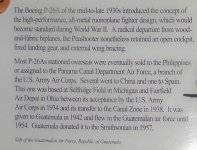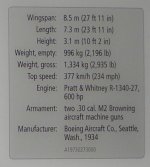-
There were many reasons for the change of the site software, the biggest was security. The age of the old software also meant no server updates for certain programs. There are many benefits to the new software, one of the biggest is the mobile functionality. Ill fix up some stuff in the coming days, we'll also try to get some of the old addons back or the data imported back into the site like the garage. To create a thread or to reply with a post is basically the same as it was in the prior software. The default style of the site is light colored, but i temporarily added a darker colored style, to change you can find a link at the bottom of the site.
You are using an out of date browser. It may not display this or other websites correctly.
You should upgrade or use an alternative browser.
You should upgrade or use an alternative browser.
Largest propeller airplane
- Thread starter Cavman
- Start date
Bob Denman
New member
Soooo... how much larger is it, than the Spruce Goose? :dontknow:
IdahoMtnSpyder
Well-known member
That airplane version is over 50 years old! When first built it was the largest airplane in the world.
Those four little engines must crank out some ponies...:yikes:
Sure does, & they ain't little ponies either!! :shocked:
IIRR, the 4 engines on that particular Antonov variant are Kuznetsov NK-12 turbo-prop engines each running 2 x 4 bladed contra-rotating props & putting out something like 15,000 horsepower EACH!!
Sooo.... Not only is the aircraft the largest turbo-prop driven aircraft in the world, but also the engines are the most powerful turbo-prop engines in the world too!! They crank out some pretty powerful GREAT-horses, not just ponies! :thumbup:
Last edited:
PrairieSpyder
New member
The take off was interesting. They didn't seem to rotate until it was off the ground.
ARtraveler
R.I.P. Dwayne
I am thinking the Spruce Goose was a bit bigger. Eight engines, 320 foot wingspan and 17 foot propellers. Not finding numbers on the Antonov at this time. :dontknow::dontknow:
Spruce Goose flew on Nov 2, 1947. Its first and only flight.
Spruce Goose flew on Nov 2, 1947. Its first and only flight.
RinconRyder
New member
...why they would use the turboprops instead of jet engines? I don't know enough about physics and engineering to know that! Anyone... anyone? (Ben Stein, Economics Teacher, Ferris Bueller's Day Off)
Ref: https://www.skybrary.aero/index.php/AP4ATCO_-_Turboprop_Engine
Summary: Turboprops are more efficient in lower and slower flight than jets and can better use short takeoff and landing runways.
classicvw
New member
I am thinking the Spruce Goose was a bit bigger. Eight engines, 320 foot wingspan and 17 foot propellers. Not finding numbers on the Antonov at this time. :dontknow::dontknow:
Spruce Goose flew on Nov 2, 1947. Its first and only flight.
Much controversy on whether the Spruce Goose actually "flew" enough to be considered a flight because it apparently stayed in ground effect. I tend to agree.
ARtraveler
R.I.P. Dwayne
The reading information I got when I googled Spruce Goose mentioned that HH felt some kind of a glitch and decided not to take it out any further for fear it my go out of control when it got to actual flying mode.
The original flight was kind of a loop around the Bay if I remember correctly.
HH followers mention he claimed he was not "afraid" to fly it--but no further flights were needed because he proved his point to Congress. It would fly, and, it was no longer needed because the war was over. :dontknow:
Wood construction for airplanes was pretty much at an end by then. I am thinking several hundred hours of shaking by the eight engines would quickly take its toll on the structural integrity.
The original flight was kind of a loop around the Bay if I remember correctly.
HH followers mention he claimed he was not "afraid" to fly it--but no further flights were needed because he proved his point to Congress. It would fly, and, it was no longer needed because the war was over. :dontknow:
Wood construction for airplanes was pretty much at an end by then. I am thinking several hundred hours of shaking by the eight engines would quickly take its toll on the structural integrity.
Last edited:
IdahoMtnSpyder
Well-known member
Was wood being used for any airplane in the 40's other than model airplanes? The first all metal plane was the P26 and it was built in the mid 30's. I believe all production military planes after that were metal.The reading information I got when I googled Spruce Goose mentioned that HH felt some kind of a glitch and decided not to take it out any further for fear it my go out of control when it got to actual flying mode.
The original flight was kind of a loop around the Bay if I remember correctly.
HH followers mention he claimed he was not "afraid" to fly it--but no further flights were needed because he proved his point to Congress. It would fly, and, it was no longer needed because the war was over. :dontknow:
Wood construction for airplanes was pretty much at an end by then. I am thinking several hundred hours of shaking by the eight engines would quickly take its toll on the structural integrity.
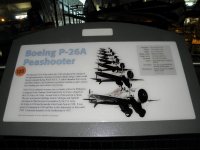
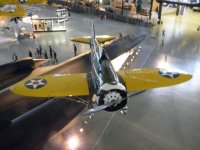
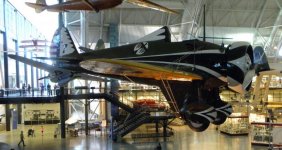
BigGuy66
Member
Thanks for the info here and...
...this part really helped me understand...
"Advantages and disadvantages of the turboprop engine
Advantages: • in dense air, i.e. lower levels, a propeller has a higher efficiency than jet exhaust; • generally turboprop aircraft can operate into shorter runways than jets; • the propeller can be feathered to minimize drag in the event of engine failure, which is not possible for jet or turbofan engines. • mechanical reliability due to relatively few moving parts; • light weight; • simplicity of operation; • high power per unit of weight;
Disadvantages: • propellers lose efficiency at high altitudes; • vibration levels can cause slight passenger discomfort; • en-route weather (icing/turbulence) can cause problems and additional passenger discomfort due to operating altitudes (often in clouds); • older generation turboprops are slow."
Very helpful... Jim
...this part really helped me understand...
"Advantages and disadvantages of the turboprop engine
Advantages: • in dense air, i.e. lower levels, a propeller has a higher efficiency than jet exhaust; • generally turboprop aircraft can operate into shorter runways than jets; • the propeller can be feathered to minimize drag in the event of engine failure, which is not possible for jet or turbofan engines. • mechanical reliability due to relatively few moving parts; • light weight; • simplicity of operation; • high power per unit of weight;
Disadvantages: • propellers lose efficiency at high altitudes; • vibration levels can cause slight passenger discomfort; • en-route weather (icing/turbulence) can cause problems and additional passenger discomfort due to operating altitudes (often in clouds); • older generation turboprops are slow."
Very helpful... Jim
IdahoMtnSpyder
Well-known member
WilderThomas
New member
WW2 Aircraft
The Spitfire, used by the RAF during WW2, primarily during the Battle of Britain, were made of wood. Training planes at Tuskegee Army Airfield, were made of wood. And I believe Stearman biplanes were as well.
Was wood being used for any airplane in the 40's other than model airplanes? The first all metal plane was the P26 and it was built in the mid 30's. I believe all production military planes after that were metal.
View attachment 155559
View attachment 155560
View attachment 155561
The Spitfire, used by the RAF during WW2, primarily during the Battle of Britain, were made of wood. Training planes at Tuskegee Army Airfield, were made of wood. And I believe Stearman biplanes were as well.
ARtraveler
R.I.P. Dwayne
Was wood being used for any airplane in the 40's other than model airplanes? The first all metal plane was the P26 and it was built in the mid 30's. I believe all production military planes after that were metal.
View attachment 155559
View attachment 155560
View attachment 155561
Good Point. :bowdown::bowdown:
PrairieSpyder
New member
Was wood being used for any airplane in the 40's other than model airplanes? The first all metal plane was the P26 and it was built in the mid 30's. I believe all production military planes after that were metal.
View attachment 155559
View attachment 155560
View attachment 155561
Wood frames were used in general aviation aircraft well into the '50s.
Similar threads
- Replies
- 4
- Views
- 942
- Replies
- 89
- Views
- 11K
- Replies
- 85
- Views
- 8K
- Replies
- 0
- Views
- 101

